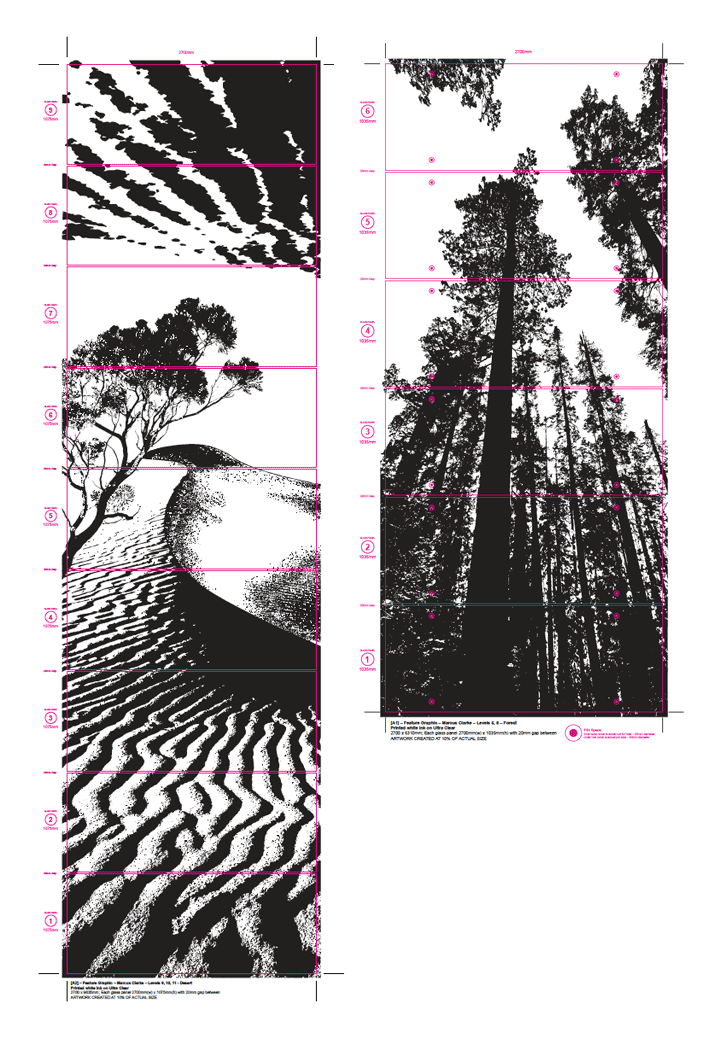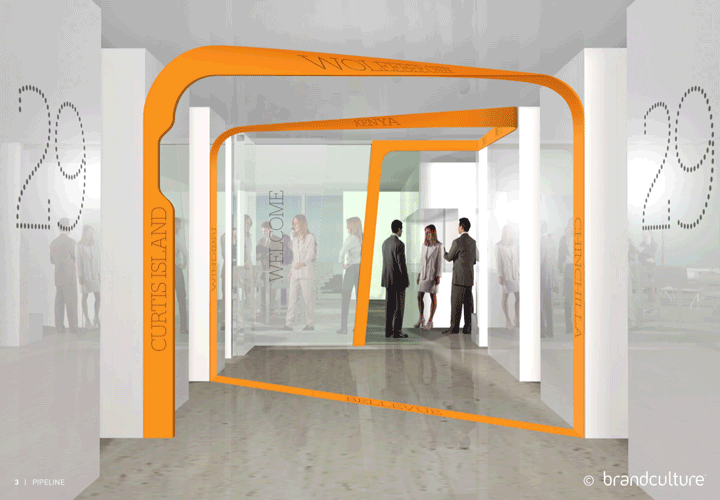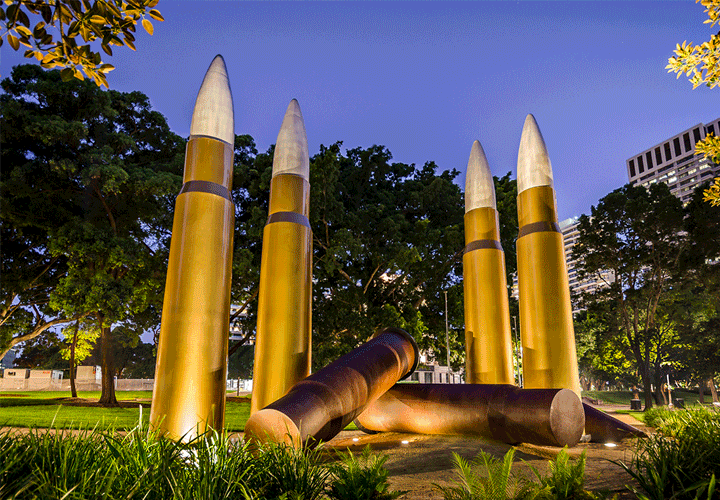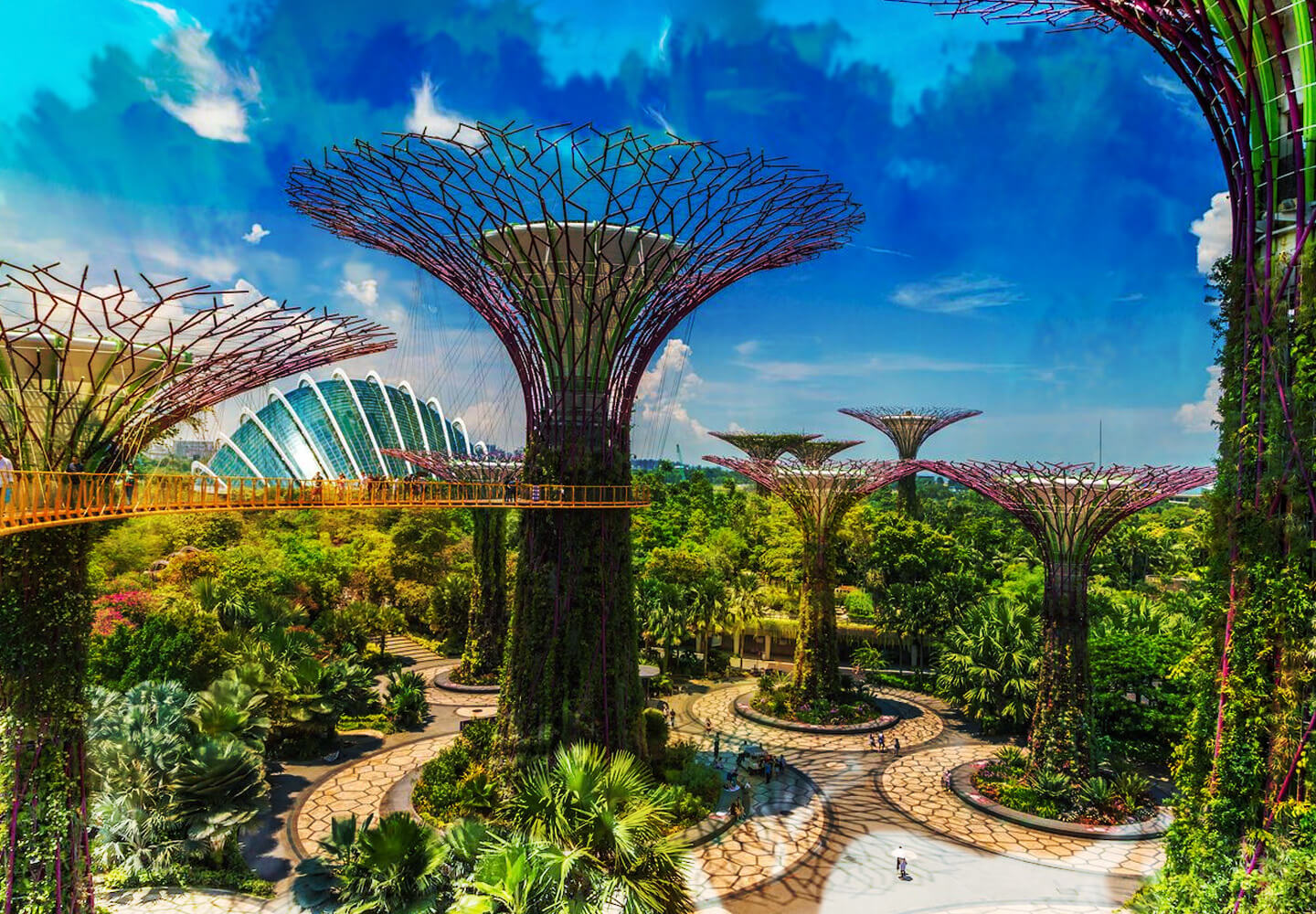This week, we make the case for commissioning experiential graphic designers to design and implement public art projects.
After many years of investing in R&D, BrandCulture has developed new and innovative ways to fabricate and print materials to achieve superior results for our clients.
Working with leading global manufacturers of materials and technology, we have learned so much through experimentation, testing and continual improvements. We’ve learned, for example, that you can’t place vinyl on top of resin – it simply curls up. When heat-treating UV prints on fabric, the fabric typically shrinks by around 10%. This means you’ll need to adjust your proportions prior to printing, leaving just the right amount of overlap to secure your graphics to each panel.
Designing incredible graphics is often the easy part. Innovating with materials and techniques is where things get tricky. It takes a studio that’s committed to experimentation to create placemaking features and art installations that will stand the test of time.
What is public art? And who should you entrust to design it?
Public art can be a painting, mural, sculpture or mosaic. It may also be more functional, incorporated into seating, paving or water features, for example. Public art is often abstract and open to interpretation. Or, it can be a powerful placemaking tool for telling local stories and keeping history alive. It can be used to create new landmarks to help people find their way: it’s much easier to navigate vast spaces if there are bold visual references along the way.
This is where experiential designers come into play. They merge craft and story with knowledge of branding and wayfinding. They embrace several disciplines (graphic, architectural, interior, landscape and industrial design) to tell stories through the built environment.
When commissioning artworks, developers and landscape architects often work with experiential design studios like ours. Not only do they understand which materials are most resilient and which printing techniques are most durable, but they are experts in telling local stories, or stories that celebrate the history of a place, increasing people’s attachment to them and making them more meaningful.
Commissioning experiential graphic designers for public art projects in Sydney
We have been creating graphic art installations that marry public art and placemaking for well over a decade. At Atlassian, we designed a pixelated mural to pay tribute to its clients and the different sectors they represent. The mural is made of 5,000 squares of an ingenious fabric that uses microscopic suction cups to stay in place. Perfecting the application technique required trial and error, persistence and passion. Similarly, at The Department of Agriculture, Fisheries and Forestry (pictured below, left) we found a way to print monochromatic super-graphics to glass and stainless-steel structures – not an easy process at the time.
At MLC, we created a towering 30-metre tall canvas, carefully curating each unique graphic to tell the MLC story. Another of our favourite art-centric projects can be found inside Burwood Library: a ‘reading tree’ made from cut polycarbonate panels and timber planks and a film printed with local flora. We also love designing digital art activations, like those we devised to bring Mills Lane and Chatswood Chase to life.
Over the years, we’ve developed a rich appreciation for materiality, story, craft – all vital elements in successful public art projects. We often work with artists and illustrators to make sure their creations compliment the materiality of the architecture and are durable and easy to maintain.
We would love to see more awareness of how experiential graphic designers change the experience of public spaces through public art and placemaking. It’s a process that requires patient collaboration between landscape architects, artists, designers, engineers and manufacturers. When successful, our creations can change the experience of public spaces, increase people’s attachment to them, and make them more meaningful.
Pictured below: design & art installations for The Department of Agriculture, Fisheries and Forestry, Queensland Gas Company and The City of Sydney’s Culture Walks.



